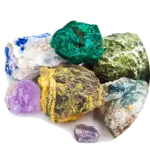The Structure of the Earth
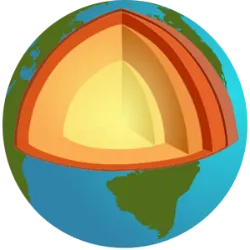
The Earth is composed of several layers that differ in composition, temperature, and physical properties. At the core, located at the center of the planet, there are two parts: the inner core, solid and primarily made of iron and nickel, and the outer core, liquid, responsible for generating Earth’s magnetic field. Above the core lies the mantle, a thick layer of hot and semi-solid rocks that move slowly, causing phenomena such as volcanoes and earthquakes. The outermost part is the crust, thin and rigid, where we live; it is divided into the continental crust, thicker and composed of granite, and the oceanic crust, thinner and made of basalt. Between the crust and the mantle is the asthenosphere, a partially melted region that allows tectonic plates to move. These layers constantly interact, shaping the planet’s surface, forming mountains, valleys, volcanoes, and oceans. Studying Earth’s structure is essential to understanding natural phenomena, exploring mineral resources, and assessing geological risks. In this way, the planet reveals a continuous internal dynamic that sustains life and transforms the landscape over time.
Geography is a very old science, and was born in Greece

Geography is a very old science, and was born in Greece, at first it was limited to describing the Earth's surface known at the time.
Geography = Geo (Earth) + spelling (description)
Currently, and taking into account the complexity of the aspects that can be observed on the earth's surface, Geography is not limited to describing but also interpreting existing phenomena, as well as the relationships that are established, in order to find solutions to existing problems. In short, Geography is the science dedicated to the study of physical and human phenomena that occur on the Earth's surface and the interrelationships that they establish.
Test yourself with one of these challenges 👇
You can still go deeper with those who are experts in the subject: geografiacolaborativa
Discover some interesting facts about Geography
The Dynamics of the Earth
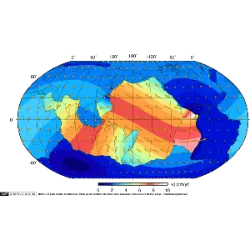
Tectonic plates are large blocks that make up Earth’s surface and move slowly over the mantle. Their collisions, separations, and sliding motions explain earthquakes, volcanoes, and the formation of mountain ranges. When one plate sinks beneath another, the material heats up and can generate volcanoes, which release magma, gases, and ash. The intensity of eruptions depends on magma composition and the pressure accumulated inside the crust.
Rocks are natural aggregates of minerals that form the foundation of Earth’s crust. They may be igneous, when solidified from magma; sedimentary, formed by the compaction of sediments; or metamorphic, transformed by high heat and pressure. Each type reveals important processes in Earth’s geological evolution.
Minerals are natural solid substances with a defined chemical composition and crystalline structure that determine properties such as color, luster, and hardness. Ores, in turn, are minerals or rocks that contain economically valuable elements — such as iron, copper, or gold — in concentrations that allow extraction. Together, these concepts show the planet’s internal dynamics and the origin of many essential resources.
Planet Uranus is the seventh planet from the Sun
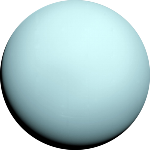
Planet Uranus is the seventh planet from the Sun, being one of the four gaseous planets in the Solar System. It has a composition of gases such as hydrogen and helium, as well as various "ices" such as water, ammonia and methane, as well as traces of hydrocarbons. It is known for its extensive series of rings that surround its surface, totaling 13. The planet also has 27 moons already identified. A peculiar feature of Uranus is its 84-year translational motion. It has the coldest atmosphere in the Solar System, with minimum temperatures of 49 K (–224 °C). Its blue color is a result of absorption of red light by methane in the upper atmosphere.
Mount Everest is rising!

Mount Everest, the highest mountain in the world, is constantly growing! Located in the Himalayan mountain range between Nepal and Tibet, its elevation gradually increases due to the movement of the Indian and Eurasian tectonic plates, which are in constant collision. This impact causes the Himalayas to rise a few millimeters every year.
This process occurs due to orogenesis, a geological phenomenon responsible for the formation of mountain ranges over millions of years. In the case of Everest, the pressure of the Indian plate against the Eurasian plate generates a slow but constant growth of the mountain.
However, this increase is not always linear. Earthquakes in the region can occasionally reduce Everest's height. An example of this occurred in 2015, when a strong tremor in Nepal caused the mountain to lose a few centimeters of its altitude, according to scientific measurements.
In addition to being a natural wonder, Everest continues to challenge climbers from all over the world, who face extreme weather conditions to reach the highest point. Its continued growth highlights the dynamics of Earth and how the forces of nature constantly and impressively shape our planet.
Planet Neturnus
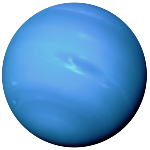
Planet Neturnus is the eighth planet from the Sun in the Solar System and the last since Pluto was reclassified as a planetary dwarf in 2006. It has a rocky core and a layer formed by water, ammonia and methane. Its atmosphere is mostly hydrogen and helium, and it takes 16 Earth hours to complete a Neptunian day. The planet has 13 confirmed moons and one awaiting scientific recognition. It is also surrounded by three notable rings: Liberty, Equality and Fraternity. Neptune's bright blue-green color is a result of the high level of methane in the atmosphere.
The celestial bodies that we identify as planets orbit around stars
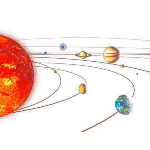
The celestial bodies that we identify as planets orbit around stars, just as the Earth circles the Sun. They do not emit light of their own, making visible only the portion that is illuminated by the stars. As a result, they are categorized as illuminated celestial bodies. In addition, they may have natural satellites, which are celestial bodies devoid of their own light and that orbit around them, as is the case of the moon, which orbits around the Earth.
Test yourself with one of these challenges 👇
HOME


